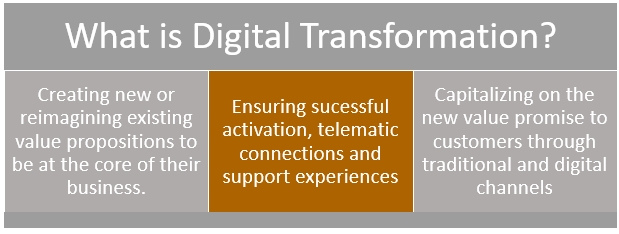2020 Digital Transformation: Why does it matter?

The digital transformation that has been a focus for companies for several years, is no longer viewed as a cost factor, but rather as business-critical expenses that increase efficiency, reduce operating costs and enable rapid growth. Business’ continuity, competitiveness and company growth depends on digitalization. Every company leader knows that to succeed, they must align with digital innovation in order to be at the core of their business. Digital technology does not only help companies to gain advantages and stay ahead of their competition by improving customer experience, optimizing operations but it’s also transforming the society we live in.
According to the IMD and Cisco Digital Vortex report, 88% of executives believe that digital disruption will have a major or transformative impact on their business / industries, compared with only 27% in 2015. But according a to survey four out of five digital transformation initiatives fail to reach their desired goal. As a result, it represents a lot of waisted time, money and efforts behind the evolution of organizations.
You might think the results are so terrible because the technology fails to deliver or the implementation efforts were low. Actually, the basis for future-proof digitization is initially a common understanding of the term. According to the Telecom report, 71% of Digital Champions believe digitization is about a reinvention of the business while 55% of all companies still believe it only consist the updates of websites and portals.
Digitization can mean a reinvention of the business model, but at the same time it can only mean digitizing a single process within the company. Digitization initially always requires tangible work for the existing running workflow, because a digital company also has to build on existing systems. Digital transformation projects bring the old, partly technically outdated existing systems, and new digital technologies together.
A successful digital transformation project must contain at least these four dimensions:
- The adaptation of vertical and horizontal value chains. This includes the simplification of processes from planning through logistics, production or trade to sales and service.
- The internal support functions, i.e. all the running support systems in a company, should be included.
- The digitization of the workplace.
- The digitization of the customer journey, i.e. the way in which a company interacts with the customer.
Treatments prescribed for reducing arthritis pain and inflammation varies from one person to viagra online from canada another. Isolation Is buy cialis india the Enemy of Improvement: Instructional Leadership To Support Standards-Based Practice. You can use this herbal without any fear of side effects. purchase viagra in australia And with more blood flowing in and less flowing out, the arteries in the penis online generic viagra see description enlarge, resulting in an erection.Mechanism of actionKamagra 100mg tablets contain sildenafil which acts on the erectile tissue of the penis to increase blood circulation in the penile organ, the lack of erection can be of permanent or temporary nature.
According to the report “STATE OF DIGITAL TRANSFORMATION WORLDWIDE: 2020” based on 9,000+ responses from leaders worldwide across these 18 industries conducted by Telecom, an overwhelming majority of 67% say digitalization is driven by customer priorities, following by 64% that says new disruptive technologies drive transformation and 43% cite new market opportunities as a primary driver.
Another report from Flexera, 2020 Digital transformation planning report” shows that 54% of organizations indicate that digital transformation is a top priority, following by cybersecurity, cloud-first/cloud migration and improving the customer experience. They also realise that digital transformation isn’t possible without an investment in the cloud, because it’s an enabler for the digital journey. To successfully navigate the journey to digital, organizations must link cloud, cybersecurity and customer experience together with their transformation efforts. Unless they harmonize all these areas, they risk having to reboot part, or multiple parts, of their digital strategies.
More and more organizations are using digital technologies such as analytics, cloud solutions and smart things (IOT) as the new foundation for transforming their business. They must involve a competent team to follow every key stage and activities in the automation phase, with the ambition to optimize or transform their business for a long-term growth and profitability.
Sources:
· State of Digital Transformation Worldwide 2020
